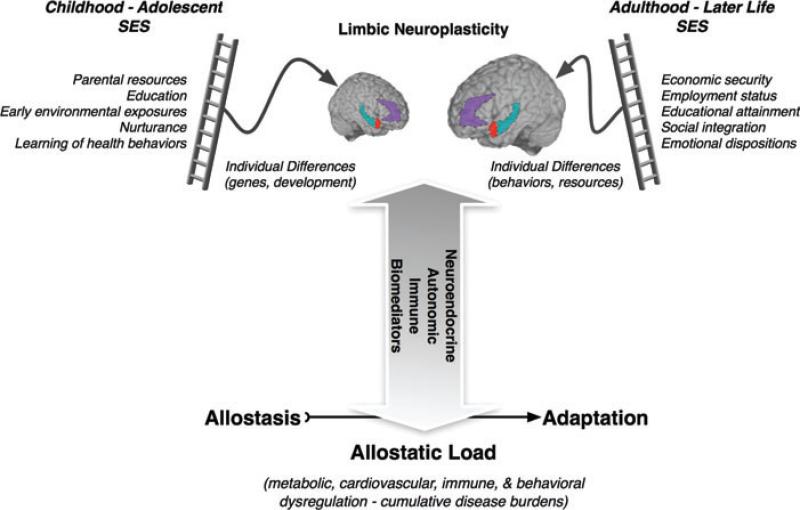Figure 2.
Neurobiological pathways of SES and allostatic load. A heuristic schematic illustrating the potential neurobiological pathways by which psychosocial factors related to SES may impact allostatic control systems underpinning allostatic load and disease risk. In childhood and adolescence, psychosocial factors related to SES and reviewed elsewhere in this volume (e.g., parental resources and education) are likely to interact with genetic and dispositional individual differences to affect the neuroplasticity of limbic brain areas that regulate allostatic control systems. These brain areas include subdivisions of the prefrontal cortex (e.g., the anterior cingulate cortex in purple), hippocampus (in blue-green), and the amygdala (in red). Importantly, these limbic areas regulate neuroendocrine, autonomic, and immune systems, which are involved in the bidirectional allodynamic control of central and peripheral physiology. In adulthood and later life, psychosocial factors related to SES (e.g., meaningful employment and social integration) may similarly interact with individual difference and behavioral lifestyle factors to affect the neuroplasticity and aging of the same limbic systems mediating and targeted by allostatic control systems. To the extent that lower SES adversely affects limbic neuroplasticity via stress-related factors, then the regulation of key allostatic control systems may become impaired, leading to allostatic load on the body and brain and perhaps increased risk for ill health.

